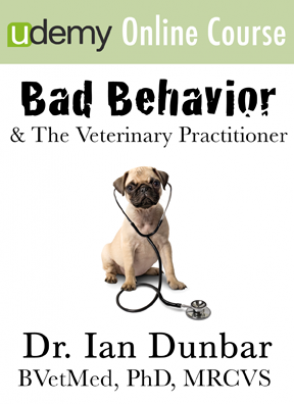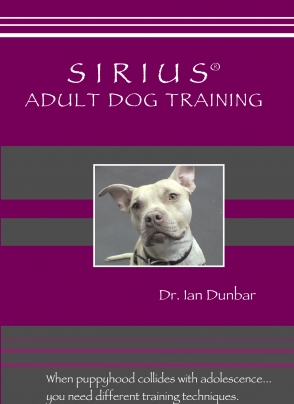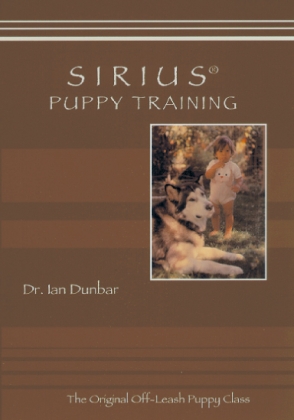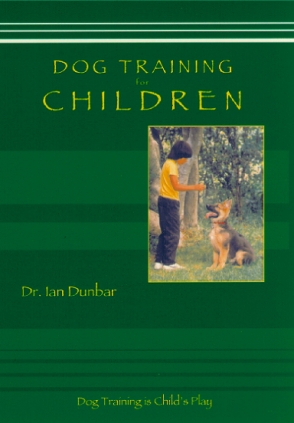Bad behavior can ruin your practice. Train your clients to train their dogs and you're clinic will thrive!
Bribes!
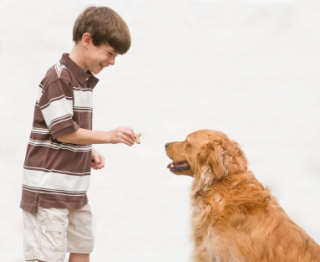
Some forty years ago, when I started to re-popularize the use of food lures and rewards in dog training, many trainers were adamantly opposed. ”I don’t want to bribe my dog.” “I want the dog to do it for me.” “That’s sissy training.” I knew these knee-jerk statements stemmed from a lack of understanding of basic learning principles and so I wrote a number of articles, explaining how the temporary use of food as lures and rewards was very different from using food as bribes.
I considered the prevailing preference for leash prompting and punishment over food lure/reward training to be a major quality of life issue for dogs and their owners. Reliable off-leash, verbal control means more off-leash walks. Training on-leash to try to establish off-leash reliability understandably took forever (often several years), whereas the five-stage, lure/reward training technique was by far the quickest way to teach a dog (and almost any animal) to perform cued responses, reliably, off-leash, at a distance, with distractions and without the continued need of any training aid. Lure/reward training was quick and easy but also produced more reliable results. Yes, we used lures and rewards in the training process but their use was phased out extremely quickly.
These days though, bribing is fast becoming the norm for those that use food in training. So many trainers and hence so many owners continue to use food lures and rewards throughout the entire training program. If the same item is used as both a lure and a reward, then the process approximates bribing. Even in the clicker world, where specific lures are not always used, presenting the food (in hand and pouch) beforehand muddies the waters and consequently, response-reliability suffers.
Now certainly, the liberal use of food and toys has made the training arena a much happier place for dogs and their owners. Many classes and consultations have become classical conditioning extravaganzas and trainers are doing a great job of producing dogs with better temperaments and fewer behavior problems. But basic manners have taken a tumble. Standards have dropped. Far too many dogs only respond when the trainer is in training mode and has food in their hand or food pouch.
Reliable off-leash verbal control (emergency distance sits or downs, stays and recalls) and good leash manners are important. This is what dog owners want and if they don’t get it, they’ll seek instruction elsewhere.
Yes, of course, we want to continue to use food and toy lures and rewards. Using rewards increases the ease, effectiveness and enjoyment of training and using lures speeds up the whole process and makes training quicker. We certainly don’t want to throw out the baby with the bath water. However, we want to use food lures and rewards to quickly and effectively teach dogs to respond reliably to verbal cues when off-leash and at a distance and without the continued need of any training aid, especially without the continued need for food lures and food rewards. Yes we should use food lures and rewards but also, we should check that response-reliability is not contingent on the trainer having food in their hand or on their person.
Food lures must be phased out during Stage One of lure/reward training, after just 6-12 trials in the very first training session. This is easy to do because dogs learn hand-signals so quickly and effortlessly. Then you’ll have the confidence that you don’t need food in your hand to get the dog to respond. Hand signals may then be used as effective lures to teach dogs the meaning of verbal commands. At the end of Stage One, test response-reliability to verbal cues only (standing absolutely still and with back turned). If the dog doesn’t sit when just one yard away with your back turned, what makes you think he would sit when he’s forty yards away chasing a rabbit, another dog, or a child on a skateboard?
From the outset, only reward the dog on a differential reinforcement schedule — at the very most only reward the dog for above average responses and then progressively refine criteria and ask more-for-less, with the dog receiving better rewards for better responses and the very best rewards (life rewards and jackpots) for the very best responses. By the end of Stage Two, eliminate the use of food rewards entirely and replace them with much more effective life rewards, so that the dog becomes internally motivated and the responses become self-reinforcing. Now you’ll have the confidence that you don’t need food in your food pouch to get the dog to respond.
When done properly, lure/reward training is by far the quickest way to teach reliable off-leash verbal control. This will be the focus of my new Science-Based Dog Training (with Feeling) seminars and the 4-Day Academies in Anaheim, Philadelphia and Chicago.

